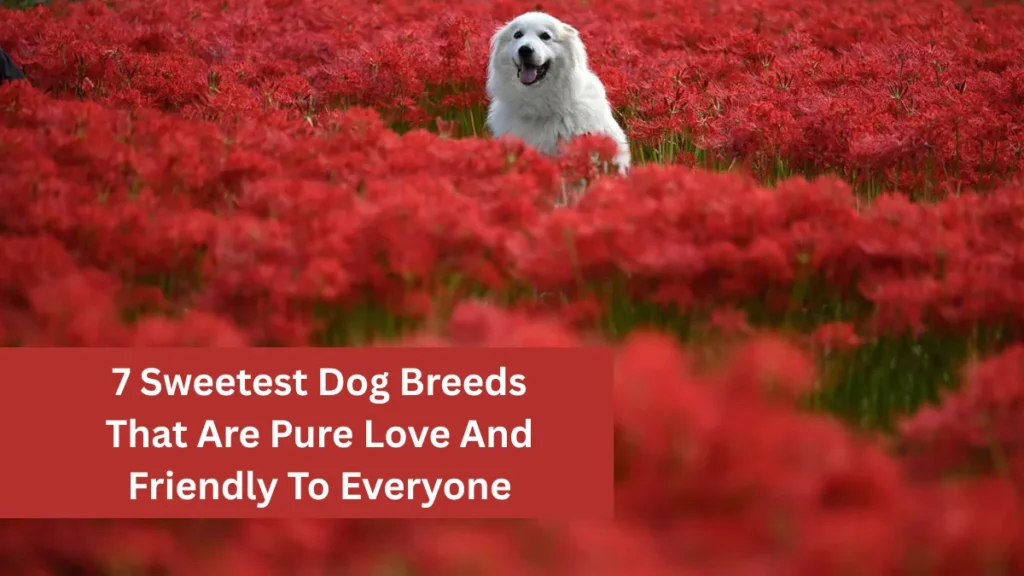While dogs are often hailed as man’s best friend, not every breed is fit for a typical home environment. Some dogs, despite their loyalty and affection, possess physical power, territorial instincts, or behavioral complexities that make them difficult to manage without expert care. These breeds often require experienced handlers, specialized environments, and consistent, structured training.
In this guide, we’ll explore seven dog breeds that are not ideal for most households—and why they might be better suited to working roles or highly experienced dog owners.
1. Pit Bull Terrier
Why It’s Challenging: Strong, assertive, high energy
Risk Factor: Potential aggression if untrained
Banned in: Several U.S. cities and countries worldwide
The Pit Bull Terrier has a controversial reputation, much of which stems from its past use in fighting rings. While many Pit Bulls are affectionate and loyal, their powerful build and tenacity make them a challenge for inexperienced owners.
This breed needs early socialization, firm training, and an owner who understands canine body language. If improperly raised, their strength and instincts can become dangerous—especially in homes with small children or other pets.
2. Japanese Tosa (Tosa Inu)
Why It’s Challenging: History as a fighting dog
Risk Factor: Aggression toward other dogs
Banned in: UK, Australia, New Zealand, and others
The Japanese Tosa is a giant breed with a calm demeanor, but its sheer size and origin in dog fighting raise serious concerns for households. Weighing over 100 pounds, this breed requires a handler who can provide strict structure and socialization.
Even well-raised Tosas may exhibit aggression toward unfamiliar animals. Without a secure environment and consistent guidance, they can become overprotective, making them unsuitable for average homes or multi-pet households.
3. Dogo Argentino
Why It’s Challenging: Built for big-game hunting
Risk Factor: High prey drive, territorial behavior
Banned in: United Kingdom, Australia, and more
Originally developed in Argentina to hunt wild boar, the Dogo Argentino is a muscular, determined dog with powerful instincts. While it can be loving and loyal, its strength and drive demand skilled training.
This breed is not ideal for homes with small animals, and improper handling can lead to aggression. Though beautiful and intelligent, Dogos need confident, experienced owners who can channel their energy into structured activities.
4. Fila Brasileiro (Brazilian Mastiff)
Why It’s Challenging: Intense loyalty and protectiveness
Risk Factor: Strong territorial instincts
Banned in: Several countries including the UK
The Fila Brasileiro is known for its fearless loyalty to its family—but that comes with a cost. This dog can be dangerously aggressive toward strangers, including houseguests or neighbors, due to its protective nature.
Its socialization must begin early and continue throughout life. Without expert handling and controlled environments, the Fila may become overprotective, reactive, and unmanageable in a home setting.
5. American Staffordshire Terrier
Why It’s Challenging: High energy, powerful prey drive
Risk Factor: Can be aggressive toward other animals
Restricted in: Various U.S. municipalities and global regions
Often grouped with the Pit Bull, the American Staffordshire Terrier is muscular, energetic, and deeply loyal. However, they also have a powerful bite force and were bred with combative instincts.
Though many are gentle and family-friendly, their strength and determination mean they require confident leadership. Without firm training and early socialization, they can become problematic, particularly in homes with other pets or young children.
6. Perro de Presa Canario
Why It’s Challenging: Dominant, territorial guardian breed
Risk Factor: Aggression without consistent leadership
Restricted in: Some U.S. states and countries in Europe
Originally bred to herd livestock and guard property in the Canary Islands, the Presa Canario is large, fearless, and strong-willed. They thrive under firm leadership but can become aggressive if not properly socialized.
In family settings, this dog’s protective nature can cause tension with guests or other animals. Without structure, they may display dominance, making them unsafe in casual or untrained hands.
7. Kangal Shepherd Dog
Why It’s Challenging: Designed for predator control
Risk Factor: Extreme strength, territorial behavior
Restricted in: Some U.S. states and EU countries
The Kangal is a formidable livestock guardian bred to fend off wolves and other predators in Turkey. These dogs are known for their immense bite force, independent nature, and intense loyalty.
Though affectionate with family, Kangals are not easily trained by novice owners. Their territorial behavior can turn into aggression without regular, focused training. They are better suited to rural areas and working roles, not urban or suburban homes.
⚠️ Why These Breeds Are Hard to Keep as Pets
Many of these dogs were originally developed for guarding, fighting, or hunting—jobs that require strength, confidence, and assertiveness. In the wrong hands or environments, these traits can lead to destructive or dangerous behavior.
A combination of size, strength, and instinct makes these breeds inappropriate for:
- Inexperienced or first-time dog owners
- Homes with young children or small pets
- Urban or small living spaces
- Owners unable to commit to firm training and socialization
✅ What to Do Before Adopting a High-Risk Breed
If you’re still considering one of these breeds, take the following steps:
- Consult a professional trainer experienced with large or aggressive breeds
- Research breed-specific legislation in your area
- Visit breed-specific rescues or breeders for insights on temperament and needs
- Prepare your home for secure containment and safety measures
- Commit to daily training, exercise, and socialization
🐾 Final Thoughts
Not all dogs are suited to all homes. While breeds like the Kangal or Dogo Argentino can be loyal and loving, their instincts and strength mean they aren’t appropriate for every family. Always consider your lifestyle, experience level, and environment before choosing a pet—especially one with such complex needs.
By making informed decisions, you ensure the safety, happiness, and well-being of both the dog and everyone around them.
FAQs
Why are some dog breeds not suitable as pets?
Some breeds have high energy levels, aggressive tendencies, or strong territorial instincts that make them difficult to manage in a home setting.
Are there any legal restrictions on owning certain breeds?
Yes, several breeds, such as the Pit Bull Terrier and Fila Brasileiro, are restricted or banned in some regions due to their aggressive nature.
Can these dogs be good pets with the right training?
With proper training and socialization, some of these breeds can be good pets, but they often require experienced owners.
What should potential owners consider before adopting these breeds?
Potential owners must assess their ability to manage the breed’s energy, strength, and behavior, and whether they can provide the necessary training and supervision.


